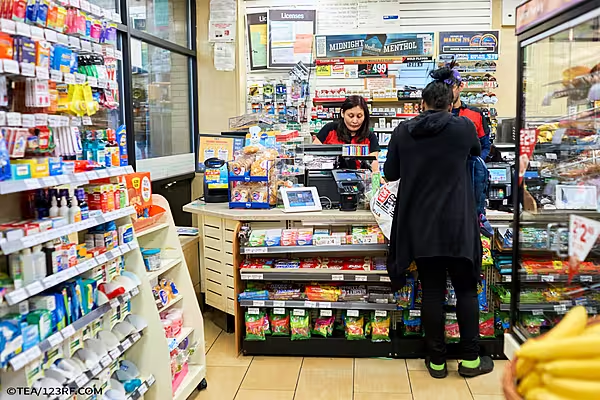U.S. consumer spending barely rose in January and income increased modestly in February, suggesting the economy was fast losing momentum after growth slowed in the fourth quarter.
The report from the Commerce Department showed price pressures muted in January, with a measure of overall inflation posting its smallest annual increase in nearly 2-1/2 years.
The U.S. central bank abandoned projections for any interest rate hikes this year after increasing borrowing costs four times in 2018, in a nod to the slowing economy, low inflation and rising headwinds to growth.
The economy is losing steam as the stimulus from $1.5 trillion in tax cuts as well as increased government spending dissipates.
Tax Cut Bill
"Unless some positive shock hits the economy, by the fall, we are likely to be back to where we were before the tax cut bill was passed," said Joel Naroff, chief economist at Naroff Economic Advisors in Holland, Pennsylvania.
Consumer spending, which accounts for more than two-thirds of U.S. economic activity, edged up 0.1% as households cut back on purchases of motor vehicles. Spending fell 0.6% in December.
Economists polled by Reuters had forecast consumer spending increasing 0.3% in January. The release of the January consumer spending figures was delayed by a five-week partial shutdown of the federal government that ended on Jan. 25.
When adjusted for inflation, consumer spending gained 0.1% in January after dropping 0.6% in December.
The dollar slipped against a basket of currencies. U.S. Treasury prices fell, while stocks on Wall Street rose.
Weak Data Stream
The weak consumer spending report extended the run of soft data ranging from housing starts to manufacturing that have flagged a sharp slowdown in growth early in the first quarter. The economy's outlook is also being overshadowed by slowing global growth, Washington's trade war with China and uncertainty over Britain's departure from the European Union.
Gross domestic product forecasts for the first quarter are as low as a 0.9% annualized rate. The economy grew at a 2.2% pace in the fourth quarter after expanding at a brisk 3.4% rate in the July-September period.
But the Fed's decision to shelve further monetary policy tightening could prop up the interest-rate-sensitive housing market. A second report on Friday from the Commerce Department showed new home sales rose 4.9% to a seasonally adjusted annual rate of 667,000 units in February, the highest level since March 2018.
The housing market, however, accounts for a small fraction of the economy. A recovery in the sector, which hit a soft patch last year, will probably not be enough to blunt the impact on growth from slowing consumer spending and manufacturing.
A third report from the University of Michigan showed a rise in consumer sentiment in March. Economists, however, did not expect this to translate into stronger consumer spending as other confidence measures softened during the month.
"Spending will downshift to the slowest pace in a year in the first quarter," said Sal Guatieri, a senior economist at BMO Capital Markets in Toronto.
In January, spending on goods fell 0.2% after dropping 2.4% in December. It was the second straight monthly decline in spending on goods and reflected a decrease in motor vehicle purchases.
Outlays on services rose 0.2% as consumers paid more for financial services and insurance, after increasing 0.3% in December.
With demand softening, inflation pressures were tame in January. The personal consumption expenditures (PCE) price index fell 0.1%, reversing December's 0.1% gain.
PCE Price Index
In the 12 month through January, the PCE price index rose 1.4%, the smallest rise since September 2016 after increasing 1.8% in December.
Excluding the volatile food and energy components, the PCE price index ticked up 0.1% in January after rising 0.2% in the prior month. That lowered the year-on-year increase in the so-called core PCE price index to 1.8% from 2.0% in December.
The core PCE index is the Fed's preferred inflation measure. It hit the U.S. central bank's 2% inflation target in March last year for the first time since April 2012.
In February, personal income increased 0.2% after dipping 0.1% in January. Incomes have been volatile in recent months because of one-off factors, including government payments to farmers caught in the U.S.-China trade war.
Wages rose 0.3% in February, matching January's gain. Savings decreased to $1.19 trillion last month from $1.22 trillion in January.
News by Reuters, edited by ESM. Click subscribe to sign up to ESM: European Supermarket Magazine.














